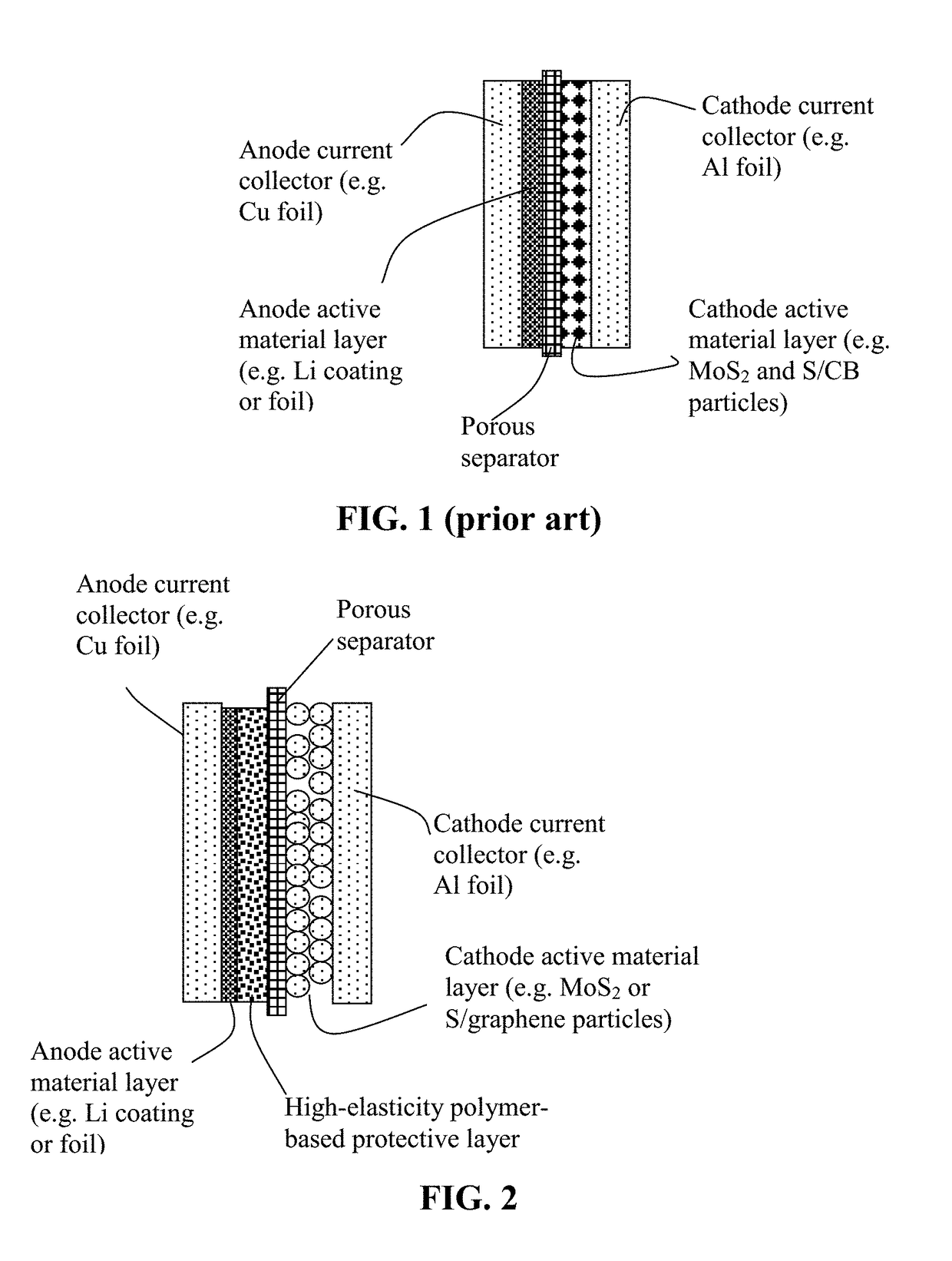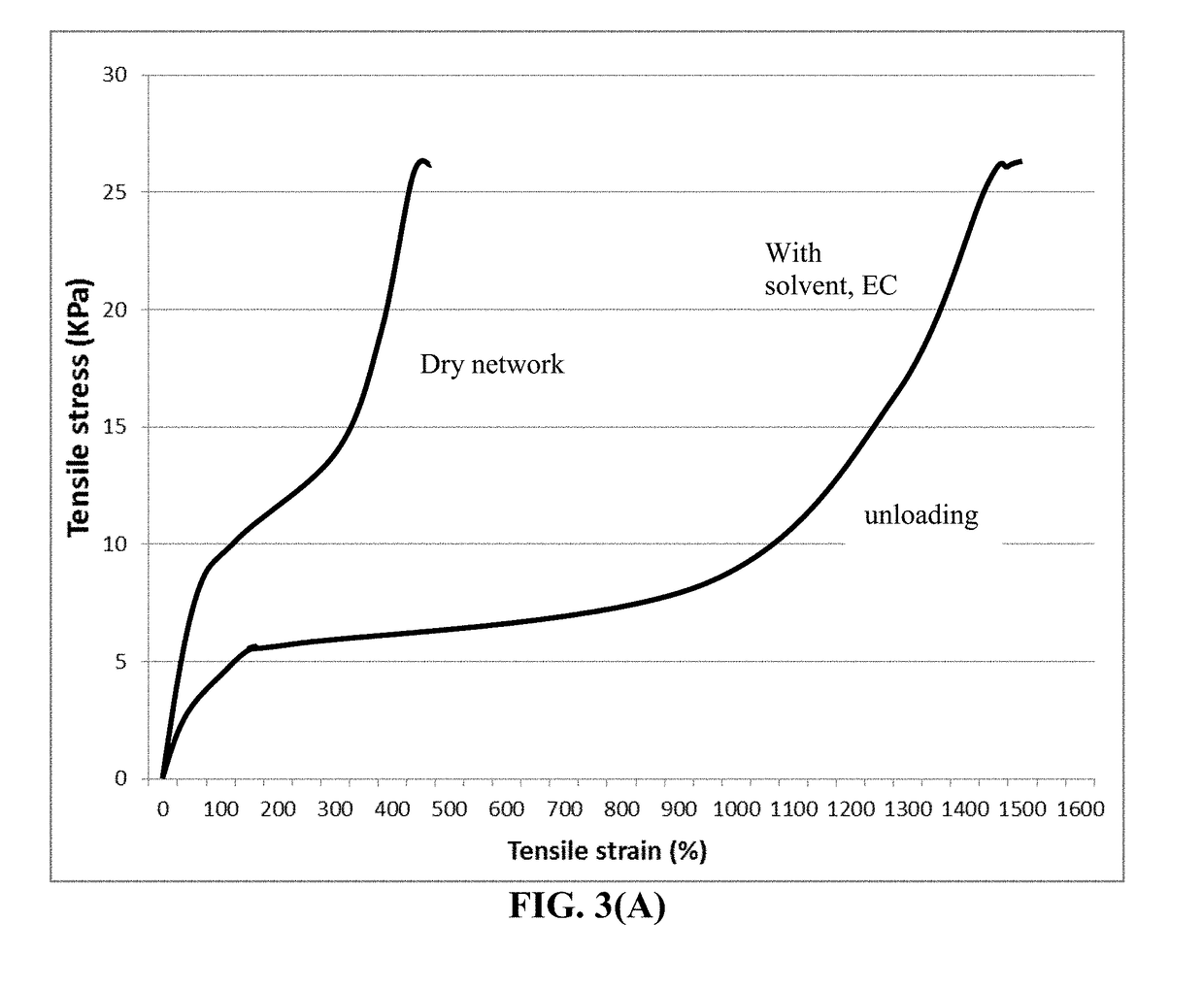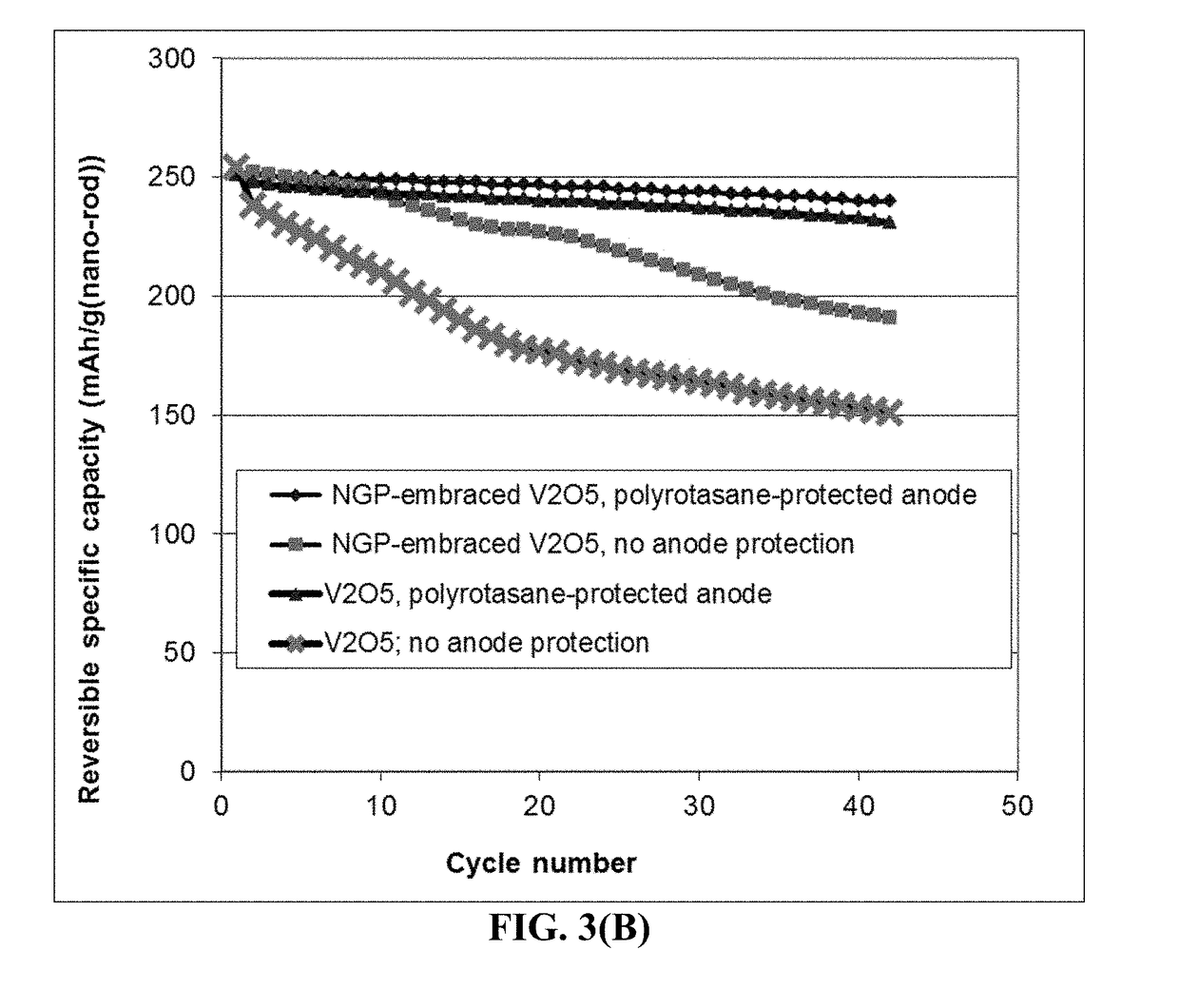Anode-Protecting Layer for a Lithium Metal Secondary Battery and Manufacturing Method
a secondary battery and anode protection technology, applied in the field of rechargeable lithium metal batteries, can solve the problems of internal electrical shorting, thermal runaway, unsafe conditions in the battery, etc., and achieve the effect of improving the lithium ion conductivity of the polymer
- Summary
- Abstract
- Description
- Claims
- Application Information
AI Technical Summary
Benefits of technology
Problems solved by technology
Method used
Image
Examples
example 3
Cells Containing Metal Fluoride Nanoparticle-Based Cathode and a High-Elasticity Polymer-Protected Lithium Anode
[0114]This polyrotaxane (PR) consists of α-cyclodextrin (α-CD), polyethylene glycol (PEG) with terminal carboxylic acids and a capping agent (1-adamantanamine). In the slide-ring gel, a-CDs in one PR are cross-linked to α-CDs in different PRs. The PEG main chains are not fixed at the cross-linking points in the polymer network; instead, they can pass through the hole of a figure-8-shaped junction of cross-linked α-CDs freely, which is called the ‘pulley effect’. The stress exerted on part of the polymer network is minimized through this effect. As a result, the polymer network exhibits high extensibility and a small hysteresis on repeated extension and contraction.
[0115]Polymer networks using PR as a cross-linker and N-Isopropylacrylamide (NIPA) as the monomer were prepared. In addition, ionic sites were introduced into the PR-cross-linked polymer network to obtain extreme...
example 4
c Cell Containing a Naphthalocyanine / Reduced Graphene Oxide (FePc / RGO) Particulate Cathode and a High Elasticity Polymer-Protected Li Foil Anode
[0122]Particles of combined FePc / graphene sheets were obtained by ball-milling a mixture of FePc and RGO in a milling chamber for 30 minutes. The resulting FePc / RGO mixture particles were potato-like in shape. Some of these mixture particles were encapsulated by a rotaxane network polymer (as described in Example 1) using the pan-coating procedure. Two lithium cells were prepared, each containing a Li foil anode, a porous separator, and a cathode layer of FePc / RGO particles (encapsulated or un-encapsulated).
[0123]The cycling behaviors of these 2 lithium cells are shown in FIG. 6, which indicates that the lithium-organic cell having a high-elasticity polymer protection layer in the anode exhibits a significantly more stable cycling response. This protective polymer reduces or eliminates the continuing contact between the lithium metal and the...
example 5
s Containing an Anode-Protecting Layer and a Cathode Containing Sulfur-Impregnated Activated Carbon Particles
[0124]One way to combine sulfur with a conducting material (e.g. carbon / graphite particles) is to use a solution or melt mixing process. Highly porous activated carbon particles, chemically etched mesocarbon micro-beads (activated MCMBs), and exfoliated graphite worms were mixed with sulfur melt at 117-120° C. (slightly above the melting point of S, 115.2° C.) for 10-60 minutes to obtain sulfur-impregnated carbon particles.
[0125]FIG. 7 shows the cathode specific capacity values of two Li—S batteries having a cathode active material based on a S-impregnated activated MCMB: one cell having a polyrotaxane-protected anode and the other one having no anode protection layer. It is clear that the rotaxane-based network polymer layer (same as prepared in Example 2) implemented at the anode is highly beneficial to the cycle stability of the Li—S battery.
PUM
| Property | Measurement | Unit |
|---|---|---|
| thickness | aaaaa | aaaaa |
| lithium ion conductivity | aaaaa | aaaaa |
| diameter | aaaaa | aaaaa |
Abstract
Description
Claims
Application Information
 Login to View More
Login to View More - R&D
- Intellectual Property
- Life Sciences
- Materials
- Tech Scout
- Unparalleled Data Quality
- Higher Quality Content
- 60% Fewer Hallucinations
Browse by: Latest US Patents, China's latest patents, Technical Efficacy Thesaurus, Application Domain, Technology Topic, Popular Technical Reports.
© 2025 PatSnap. All rights reserved.Legal|Privacy policy|Modern Slavery Act Transparency Statement|Sitemap|About US| Contact US: help@patsnap.com



